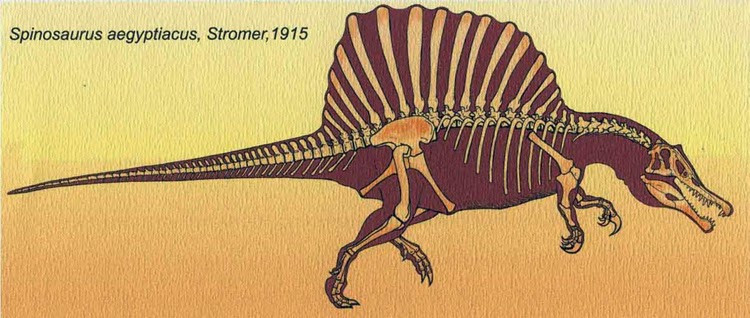The dog owners walked their dogs on a leash over this ground in an irregular time sequences, one or two at the time. This case illustrates the consequentially of drawing some behavioural conclusions exclusively based on the fossil trackways. Since the tracks in this image are directional (from left to the right and in the opposite direction) and are of the same morphotype (although, they were left by the dogs of the various breed), if these were say, the fossil tracks of some dinosaurs, an enthusiastic paleontologist might jump to a conclusion these were left at the same time by the herd of animals of various growth stages. Thus implying a gregarious behaviour and even care for their young. Of course, I don't claim the evidence like this should be dismissed in a behavioural research of the fossil animals, but to be cautious in drawing the conclusions.

Dog's trackway in a shallow snow (last Winter). Note the drag marks. Apparently, the drag mark (from the two middle claws of both the front and the hind limbs) is made on two occasions: when the foot has been closing in to meet the ground and also on the way up when the foot was in the process of raising from the ground. Some paleontologists might have interpreted the similar traces in dinosaurs as tail dragging. The dog was going from right to the left.

This ankylosaur trackway from Pula is about 50-60 meters long with mostly poorly preserved footprints. Unfortunately some of the footprints have been lost forever due to the covering with the concrete to make place for sunbathing (this is a tourist resort). At the end of the trackway there are some individual footprints of an animal of giant proportions. The ankylosaurs that left the tracks were probably of a Polacanthinae type.
The left pes footprint is quite nicely visible in the left
lower part of the photograph. The one that is a bit higher to the right
is poorly preserved. These are positives (casts). The manus prints were
preserved only on a couple of places.
There's also another
ankylosaur outcrop a couple of km away with some very nicely preserved
tracks (see some of the previous posts in my blog). The ankylosaur trackways are quite rare. One of the reasons might be that they are being miss interpreted, because they
can easily be mistaken for ornithopod or sauropod tracks. To tell you the truth I first thought these were left by iguanodontoids and sauropods. At the other site I even thought initially, that I have been looking at the theropod tracks. Only later it dawned to me it was an ankylosaur trackway.
The sites are
still not described. I am the only one that knows about these, although
this is a tourist beach. they are not easy to notice.
Sauropod trackway
(Pula 2009)
*****************
Dangerous waters: A crock farm in Thailand (November/ 2013)














































